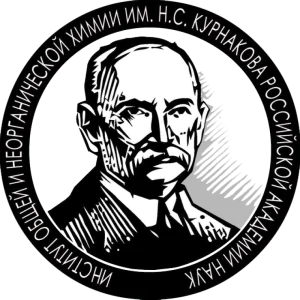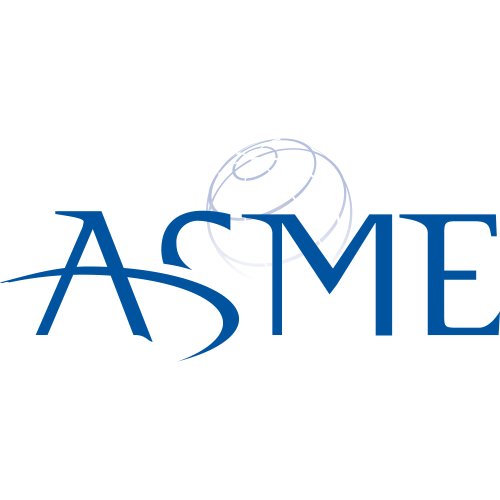Single lithium-ion conducting solid polymer electrolytes: advances and perspectives.
Heng Zhang
1
,
Chunmei Li
1
,
Michal Piszcz
1
,
Estibaliz Coya
1
,
Jun Lu
1
,
Lide M. Rodríguez-Martínez
1
,
Lide M. Rodriguez-Martinez
1
,
Michel Armand
1
,
Zhibin Zhou
2
1
CIC EnergiGUNE, Albert Einstein 48, 01510 Miñano, Álava, Spain
|
Publication type: Journal Article
Publication date: 2017-01-18
scimago Q1
wos Q1
SJR: 11.467
CiteScore: 73.2
Impact factor: 39.0
ISSN: 03060012, 14604744
PubMed ID:
28098280
General Chemistry
Abstract
Electrochemical energy storage is one of the main societal challenges to humankind in this century. The performances of classical Li-ion batteries (LIBs) with non-aqueous liquid electrolytes have made great advances in the past two decades, but the intrinsic instability of liquid electrolytes results in safety issues, and the energy density of the state-of-the-art LIBs cannot satisfy the practical requirement. Therefore, rechargeable lithium metal batteries (LMBs) have been intensively investigated considering the high theoretical capacity of lithium metal and its low negative potential. However, the progress in the field of non-aqueous liquid electrolytes for LMBs has been sluggish, with several seemingly insurmountable barriers, including dendritic Li growth and rapid capacity fading. Solid polymer electrolytes (SPEs) offer a perfect solution to these safety concerns and to the enhancement of energy density. Traditional SPEs are dual-ion conductors, in which both cations and anions are mobile and will cause a concentration polarization thus leading to poor performances of both LIBs and LMBs. Single lithium-ion (Li-ion) conducting solid polymer electrolytes (SLIC-SPEs), which have anions covalently bonded to the polymer, inorganic backbone, or immobilized by anion acceptors, are generally accepted to have advantages over conventional dual-ion conducting SPEs for application in LMBs. A high Li-ion transference number (LTN), the absence of the detrimental effect of anion polarization, and the low rate of Li dendrite growth are examples of benefits of SLIC-SPEs. To date, many types of SLIC-SPEs have been reported, including those based on organic polymers, organic-inorganic hybrid polymers and anion acceptors. In this review, a brief overview of synthetic strategies on how to realize SLIC-SPEs is given. The fundamental physical and electrochemical properties of SLIC-SPEs prepared by different methods are discussed in detail. In particular, special attention is paid to the SLIC-SPEs with high ionic conductivity and high LTN. Finally, perspectives on the main challenges and focus on the future research are also presented.
Found
Nothing found, try to update filter.
Found
Nothing found, try to update filter.
Top-30
Journals
|
5
10
15
20
25
30
35
40
45
|
|
|
ACS applied materials & interfaces
41 publications, 3.87%
|
|
|
Journal of Materials Chemistry A
36 publications, 3.4%
|
|
|
Macromolecules
35 publications, 3.3%
|
|
|
Advanced Energy Materials
31 publications, 2.92%
|
|
|
Energy Storage Materials
31 publications, 2.92%
|
|
|
Journal of Power Sources
29 publications, 2.74%
|
|
|
ACS Applied Energy Materials
28 publications, 2.64%
|
|
|
Electrochimica Acta
28 publications, 2.64%
|
|
|
Advanced Functional Materials
24 publications, 2.26%
|
|
|
Journal of the Electrochemical Society
24 publications, 2.26%
|
|
|
Angewandte Chemie - International Edition
21 publications, 1.98%
|
|
|
Angewandte Chemie
21 publications, 1.98%
|
|
|
ACS Energy Letters
20 publications, 1.89%
|
|
|
Advanced Materials
20 publications, 1.89%
|
|
|
Chemical Engineering Journal
19 publications, 1.79%
|
|
|
Solid State Ionics
15 publications, 1.42%
|
|
|
Journal of the American Chemical Society
14 publications, 1.32%
|
|
|
Journal of Energy Chemistry
13 publications, 1.23%
|
|
|
Energy and Environmental Science
13 publications, 1.23%
|
|
|
Journal of Membrane Science
12 publications, 1.13%
|
|
|
ChemSusChem
12 publications, 1.13%
|
|
|
ACS Applied Polymer Materials
11 publications, 1.04%
|
|
|
Nano Energy
11 publications, 1.04%
|
|
|
ACS Macro Letters
11 publications, 1.04%
|
|
|
Chemistry of Materials
11 publications, 1.04%
|
|
|
Macromolecular Chemistry and Physics
10 publications, 0.94%
|
|
|
Batteries & Supercaps
10 publications, 0.94%
|
|
|
Journal of Chemical Physics
9 publications, 0.85%
|
|
|
Macromolecular Rapid Communications
9 publications, 0.85%
|
|
|
5
10
15
20
25
30
35
40
45
|
Publishers
|
50
100
150
200
250
300
|
|
|
Elsevier
263 publications, 24.81%
|
|
|
Wiley
242 publications, 22.83%
|
|
|
American Chemical Society (ACS)
236 publications, 22.26%
|
|
|
Royal Society of Chemistry (RSC)
123 publications, 11.6%
|
|
|
Springer Nature
61 publications, 5.75%
|
|
|
MDPI
27 publications, 2.55%
|
|
|
The Electrochemical Society
24 publications, 2.26%
|
|
|
AIP Publishing
13 publications, 1.23%
|
|
|
Pleiades Publishing
9 publications, 0.85%
|
|
|
IOP Publishing
9 publications, 0.85%
|
|
|
Frontiers Media S.A.
6 publications, 0.57%
|
|
|
Oxford University Press
4 publications, 0.38%
|
|
|
Taylor & Francis
4 publications, 0.38%
|
|
|
Korean Society of Industrial Engineering Chemistry
3 publications, 0.28%
|
|
|
American Association for the Advancement of Science (AAAS)
3 publications, 0.28%
|
|
|
Autonomous Non-profit Organization Editorial Board of the journal Uspekhi Khimii
2 publications, 0.19%
|
|
|
American Physical Society (APS)
2 publications, 0.19%
|
|
|
University of Science and Technology Beijing
2 publications, 0.19%
|
|
|
SAGE
2 publications, 0.19%
|
|
|
OAE Publishing Inc.
2 publications, 0.19%
|
|
|
The Russian Academy of Sciences
2 publications, 0.19%
|
|
|
ASME International
1 publication, 0.09%
|
|
|
American Vacuum Society
1 publication, 0.09%
|
|
|
Bentham Science Publishers Ltd.
1 publication, 0.09%
|
|
|
Cambridge University Press
1 publication, 0.09%
|
|
|
Nonferrous Metals Society of China
1 publication, 0.09%
|
|
|
IntechOpen
1 publication, 0.09%
|
|
|
Acta Physica Sinica, Chinese Physical Society and Institute of Physics, Chinese Academy of Sciences
1 publication, 0.09%
|
|
|
Institute of Electrical and Electronics Engineers (IEEE)
1 publication, 0.09%
|
|
|
50
100
150
200
250
300
|
- We do not take into account publications without a DOI.
- Statistics recalculated weekly.
Are you a researcher?
Create a profile to get free access to personal recommendations for colleagues and new articles.
Metrics
1.1k
Total citations:
1062
Citations from 2024:
267
(25.19%)
Cite this
GOST |
RIS |
BibTex |
MLA
Cite this
GOST
Copy
Zhang H. et al. Single lithium-ion conducting solid polymer electrolytes: advances and perspectives. // Chemical Society Reviews. 2017. Vol. 46. No. 3. pp. 797-815.
GOST all authors (up to 50)
Copy
Zhang H., Li C., Piszcz M., Coya E., Lu J., Rodríguez-Martínez L. M., Rodriguez-Martinez L. M., Armand M., Zhou Z. Single lithium-ion conducting solid polymer electrolytes: advances and perspectives. // Chemical Society Reviews. 2017. Vol. 46. No. 3. pp. 797-815.
Cite this
RIS
Copy
TY - JOUR
DO - 10.1039/C6CS00491A
UR - https://doi.org/10.1039/C6CS00491A
TI - Single lithium-ion conducting solid polymer electrolytes: advances and perspectives.
T2 - Chemical Society Reviews
AU - Zhang, Heng
AU - Li, Chunmei
AU - Piszcz, Michal
AU - Coya, Estibaliz
AU - Lu, Jun
AU - Rodríguez-Martínez, Lide M.
AU - Rodriguez-Martinez, Lide M.
AU - Armand, Michel
AU - Zhou, Zhibin
PY - 2017
DA - 2017/01/18
PB - Royal Society of Chemistry (RSC)
SP - 797-815
IS - 3
VL - 46
PMID - 28098280
SN - 0306-0012
SN - 1460-4744
ER -
Cite this
BibTex (up to 50 authors)
Copy
@article{2017_Zhang,
author = {Heng Zhang and Chunmei Li and Michal Piszcz and Estibaliz Coya and Jun Lu and Lide M. Rodríguez-Martínez and Lide M. Rodriguez-Martinez and Michel Armand and Zhibin Zhou},
title = {Single lithium-ion conducting solid polymer electrolytes: advances and perspectives.},
journal = {Chemical Society Reviews},
year = {2017},
volume = {46},
publisher = {Royal Society of Chemistry (RSC)},
month = {jan},
url = {https://doi.org/10.1039/C6CS00491A},
number = {3},
pages = {797--815},
doi = {10.1039/C6CS00491A}
}
Cite this
MLA
Copy
Zhang, Heng, et al. “Single lithium-ion conducting solid polymer electrolytes: advances and perspectives..” Chemical Society Reviews, vol. 46, no. 3, Jan. 2017, pp. 797-815. https://doi.org/10.1039/C6CS00491A.
Profiles







































